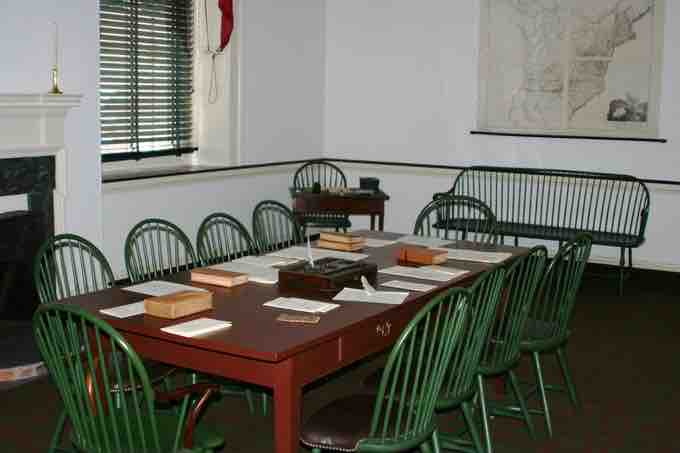Background
The two-chamber structure had functioned well in state governments. A compromise plan was adopted and representatives were chosen by the population which benefited larger states. Two senators were chosen by state governments which benefited smaller states.
When the Constitution was ratified in 1787, the ratio of the populations of large states to small states was roughly 12 to one. The Connecticut Compromise gave every state , large and small, an equal vote in the Senate. Since each state has two senators, residents of smaller states have more clout in the Senate than residents of larger states. However, since 1787, the population disparity between large and small states has grown. For example, in 2006 California had 70 times the population of Wyoming.

Congress Hall Committee Room in Philadelphia
The second committee room upstairs in Congress Hall, Philadelphia, PA.
Critics, such as constitutional scholar Sanford Levinson, have suggested that the population disparity works against residents of large states and causes a steady redistribution of resources from large states to small states. However, others argue that the framers intended for the Connecticut Compromise to construct the Senate so that each state had equal footing that was not based on population. Critics contend that the result is successful for maintaining balance.
Members and Constituents
A major role for members of Congress is providing services to constituents. Constituents request assistance with problems. Providing services helps members of Congress win votes because elections can make a difference in close races. Congressional staff can help citizens navigate government bureaucracies. One academic described the complex intertwined relation between lawmakers and constituents as "home style. "
Congressional Style
According to political scientist Richard Fenno, there are specific ways to categorize lawmakers. First, is if they are generally motivated by reelection: these are lawmakers who never met a voter they did not like and provide excellent constituent services. Second, is if they have good public policy: these are legislators who burnish a reputation for policy expertise and leadership. Third, is if they have power in the chamber: these are lawmakers who spend serious time along the rail of the House floor or in the Senate cloakroom ministering to the needs of their colleagues.